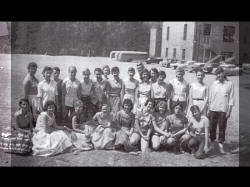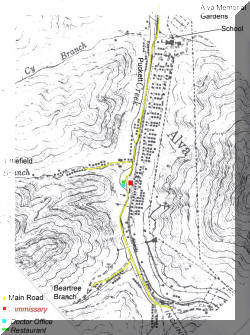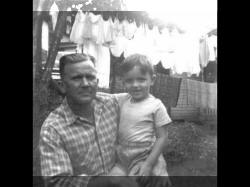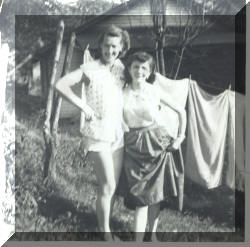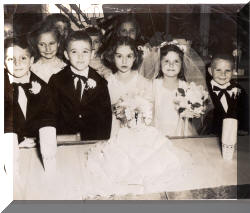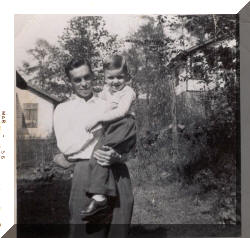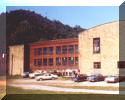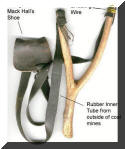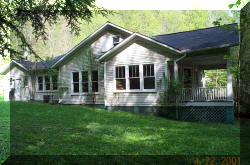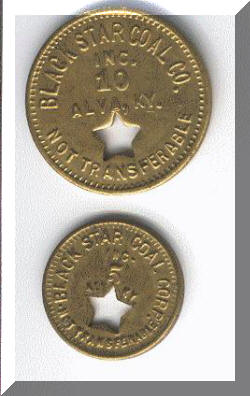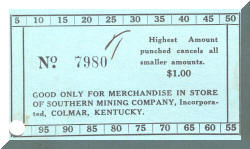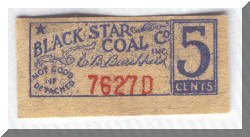Train Car @ Insul, Ky. (Date unknown) Randy Oplinger contacted me and said that the Conductor of this train, Clint Kersey, is the fellow standing in the door of the trolley on the right hand side door with the hat on. The above Photo courtesy of Bobby Taylor, Corbin, Ky.
1957 Black Star Sophomore Baseball Team
Bottom Row: (Left to Right) Shirley Stewart, Bonnie Hubbard, Linda Reed, Ann Ellison, Vivian Gold, Sandra Burns, Shirley Nelson, Donna Davenport, Linda Sue Baker. Top Row: (Left to Right) Nathella Howard, Frances Sharp, Rosa Perry, Sue Howard, Sharon Johnson, Jo Ann Helton, Brenda Walters, Nina Wilson, Violet Lawson, Coach Jack Ketchum, Mardell Gold, Rachel Taylor, Shirley Miracle, Charlene Murry, Colene Miracle.
Coal Camp Houses and Buildings are represented by the small black squares. As you can see, at one time there were many families living in the Black Star Coal Camp. This Map was provided to us by Jimmy Lane.
Mack Hall and Trent Hall
March 1956 @ Black Star Coal
Camp
Virgie Ayslinger and Rosalie Hall in Black Star Coal Camp
Jack Aysliner taken about 1958 or 1959. Jack worked the Black Star Mines and was well known at Black Star, Pineville and Middlesboro, Ky. He sold automobiles for many years.
This is Trent Hall (far left) in a first grade wedding play at Black Star. Mickey Stewart is at far right.
Willie Dean Branstutter and Trent Hall in March 1956 @ Black Star Coal Camp.
Fire Tower (Chunklick Spur Look-out at Black Star)
 During the Forties, Fifties, and Sixties
this was an attraction for children growing up in Black Star, Ligget, Creech,
Twila, and other surrounding Coal Camp communities. In the summertime,
when school was out, children would spend hours hiking to the Fire Tower.
Some would take food, camp, and spend the night.
During the Forties, Fifties, and Sixties
this was an attraction for children growing up in Black Star, Ligget, Creech,
Twila, and other surrounding Coal Camp communities. In the summertime,
when school was out, children would spend hours hiking to the Fire Tower.
Some would take food, camp, and spend the night.
Black Star Tipple -2001
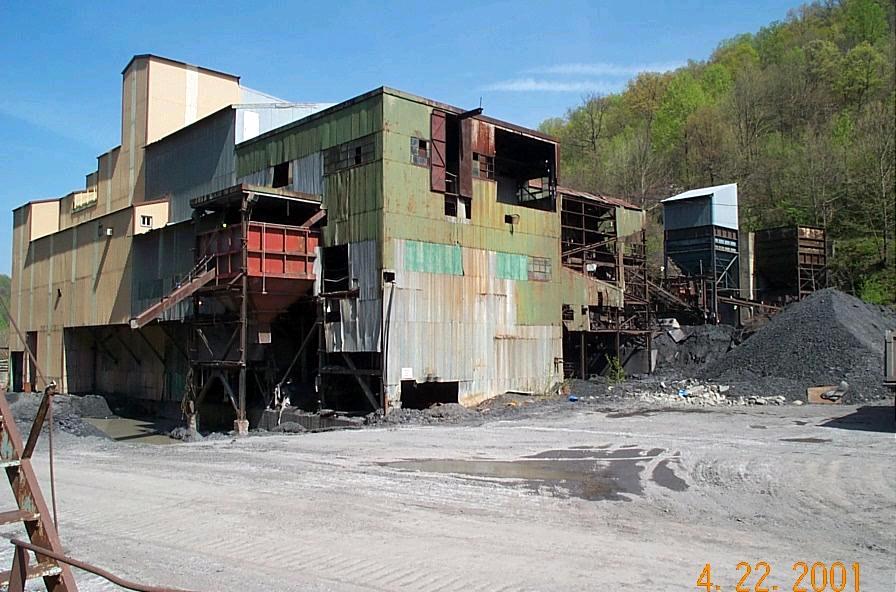
Black Star Gym (between
1938-1941)
As you can see, the school yard was under construction.
Photo
donated by Jim Myer, Houston, Texas
Picture of School
(Date Unknown) Looks like during a reunion.
At Black Star we made our own entertainment. We didn't have very many "store bought" things. We played "kick the can" and we loved to make slingshots. Above is a scan of a slingshot that my Grandma, Haliey Hall, wife of Mack Hall, took away from me when I was about 8 or 9 years old (about 1959). I had been shooting rocks at my Uncle, Ancil Hall, and Mamaw Hall took the slingshot away from me and put it in her trunk. Mamaw Hall had a trunk that she kept personal things in, and nobody really ever looked inside it. Many years later, sometime in the late 60's, she found this slingshot and gave it to me. That would make this slingshot about 45 years old now. These slingshots got us into trouble every once in a while. I think my Uncle shot a chicken or two, or maybe a window we didn't know about. We made these by cutting an old branch out of a tree. Picking up loose "shooting wire" that was used for blasting in the mines. The rubber bands were made from old truck inner tubes we found lying around where they worked on trucks. The tongue out of a pair of shoes.
Superintendent's House in 2001
Still in pretty good condition.
K.M.I. Badge worn by Elzie Cornett, Sr. to the Kentucky Mining Institute at Lexington, Ky. in 1943.
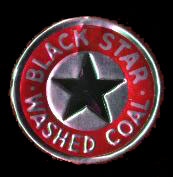
Coal scatter tags were widely used between the 1930's and 1950's to build brand loyalty among retail consumers. They were small foil or cardboard disks that were scattered into railcar or truck shipments of house coal. The colorful tags allowed customers to recognize their favorite coal.
Scrip was issued by the company owned stores to those employees who made a request for it between paydays. If an employee wanted to draw against his earned wages before payday, he could apply for "scrip" which could be spent only in the company store. The amount of scrip would then be deducted from his weekly or biweekly pay by the mine company payroll office. Most of the coal mine companies had their own stores which stocked basic commodities such as corn, beans, fruit, flour, canned goods, meat, sugar, candy, ice cream, tobacco, clothing, and furniture. In coal camps, the only store in town was usually owned or run on behalf of the coal company.
Fire Boss Report - Signed by Carl Freeman

